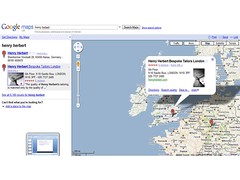Who is using Flickr for cupcake indulgence?
The two groups are Cake Biz UK and Cakes UK Style, set up by Karen Labett of Tasty Little Cakes and Svarna Singh of The Little Cakery. If you check the founders' websites, you'll see that social media is an important part of their business with prominent links on the homepage to profiles.
Why is social media relevant?
Making cakes is fun yet challenging. I know from many hours spent as a kid trashing my grandma's kitchen in search of the perfect fruit cake. It is also a social activity because cakes are made to share and deep down, when cooking most of us want to know we've done well, so feedback and discussion is important.
Unless you're an expert, it's also hard to know the best way to bake a cake, how to blend the ingredients and how to get organised. This is where the advice of a wider community is valuable - we've all got some experience but there's nowhere to access the communal perspective.
Furthermore, when planning what to bake for your next gathering, you want to know what it's going to look like. The aesthetics of cake making should not be under-valued, a good looking cake catches the eye. Inspiration is often hard to come by, so tapping into the creative suggestions of other enthusiasts can be highly beneficial.
So, information gathering, sharing and visualisation are important. This is where social media ticks the boxes and Flickr is the perfect fit.
What value does Flickr add to the community?
The article from Marketing Donut highlights the lack of UK websites to cater for cake making enthusiasts and business owners. What these groups have done is identified a need and built a solution around social media to deliver the following benefits:
- Central location for information sharing and advice
- Discussion threads are supported to encourage participation and problem solving
- Image library helps members share photos and display their skills
- People can share their passion with like minded community members
- A separate groups exists for people running a cake business - this enables business owners to share knowledge and learn from each other to benefit the market
I love this story because it emphasises how social media can be used effectively for niche business and niche discussion. The challenge is to find a need and then communicate this to the right people. Good luck to Karen and Svarna, let's hope their social media activity can influence and inspire other communities.
Thanks to The Marketing Donut for the article.







